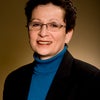I relived much of my childhood as I read Hidden Figures: The American Dream and the Untold Story of the Black Women Mathematicians Who Helped Win the Space Race. I grew up in Hampton, Virginia and my father spent his entire career at what is today NASA’s Langley Research Center, where the women presented in the book (and soon-to-be-released movie) worked. Since he is deceased, I can’t ask him if he knew the women mathematical “computers” from the book, but I imagine that he did. Let’s discover some other mathematical women through history. Match the woman with her accomplishment:
____ 1. She proved two theorems of general relativity and laid the foundation for abstract algebra.
____ 2. She developed the computer compiler, the computer software that allows humans to speak to computers in other than ones and zeros, making our modern computer technology possible.
____ 3. Stanford’s first woman professor in engineering and the first woman to be elected fellow of the American Institute of Aeronautics and Astronautics.
____ 4. The first African-American woman to receive a Ph.D. in mathematics in the U.S., today an endowed professorship in her name exists at Catholic University of America.
____ 5. Although she earned her PhD in Johns Hopkins in mathematics in 1882, it was not awarded to her until 1926.
A. Christine Ladd-Franklin
B. Amalie Emmy Noether
C. Euphemia Lofton Haynes
D. Admiral Grace Murray Hopper
E. Irmgard Flugge-Lotz
A mathematician, logician and psychologist, Christine Ladd-Franklin grew up surrounded by strong, intellectual women. She attended Vassar College, in spite of her grandmother’s misgivings that she would never attract a husband. She discovered her science skills during her second year at Vassar and graduated in 1869. She pursued graduate work at Johns Hopkins University where the mathematics department granted her an annual fellowship. Although she completed her graduate work in 1882, Johns Hopkins did not yet officially admit women and she did not receive her Ph.D. in mathematics until 1926. Ladd-Franklin made fundamental contributions to the scientific understanding of color vision and to deductive reasoning and symbolic notation in logic. She spent much of her career advocating for the opening of graduate programs and academic employment to women.
Called by Albert Einstein “the most significant creative mathematical genius thus far produced since the higher education of women began,” Amalie Emmy Noether emigrated to the U.S. from Germany. In 1918, Noether proved two theorems that formed the cornerstone for general relativity. In the 1920s, she laid the foundations for abstract algebra. Dismissed from her university position by the Nazis as she was Jewish, female and a pacifist, she emigrated to the U.S. where she accepted a professorship at Bryn Mawr College in Pennsylvania. After her death, the University of Erlangen (in Germany) bestowed many honors on her that she had deserved during her lifetime.
The first African-American woman to receive a PhD in the U.S. in mathematics (1943, Catholic University of America), Euphemia Lofton Haynes grew up in Washington, DC and earned her undergraduate degree in mathematics from Smith College. Her master’s degree was in education from the University of Chicago. She returned to Washington, DC in 1930 where she founded the mathematics department at Miner’s Teacher’s College (today, part of the University of the District of Columbia) which focused on training African-American teachers. Through multiple educational positions, Haynes advocated for poor students and better schools and disparaged the segregation system then in place. Very active in the Catholic faith, a bequest from her estate endowed the Euphemia Lofton Haynes professorship at Catholic University of America.
The woman that I consider the catalyst for all of the work I have done and I am doing to recognize women’s history is mathematician and computer scientist Admiral Grace Murray Hopper. Hopper developed the computer compiler, the computer software that translates human languages into the zeroes and ones that a computer understands. The computer compiler makes modern computer technology possible. She developed the first English-based computer language, FLOW-MATIC, and was instrumental in the development of COBOL. Hopper loved to take credit for finding the first computer bug; it was a moth, stuck in the relays of the computer. The first individual woman to receive the National Medal of Technology (1991), Hopper has been inducted into the National Women’s Hall of Fame.
The 1970 recipient of the Society of Women Engineers’ Achievement Award, applied mathematician and engineer Irmgard Flugge-Lotz was born and educated in Germany. The only woman in her class of over 1,000, she and her husband came to Stanford University in 1948 (where he was made a professor, but she was a lecturer). In 1960, she finally achieved the rank of full professor, Stanford’s first woman professor in engineering. Her area of expertise was aerodynamics and automatic control theory to which she made significant mathematical contributions. The first woman to be elected fellow of the American Institute of Aeronautics and Astronautics, her first publication described the method for calculating spanwise lift distribution on airplane wings; today called the “Lotz method.”
Learn about more she-roes and celebrate amazing women. These women mathematicians are among the more than 850 women profiled in the book Her Story: A Timeline of the Women Who Changed America. I am proud to tell women’s stories and to write them back into history.
(Answers 1-B, 2-D, 3-E, 4-C, 5-A)
